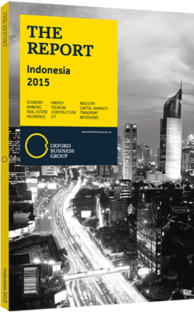Indonesia's industry must address a range of structural issues to ensure growth
Bolstered by rising domestic consumption and comparatively low labour costs, Indonesia’s textile industry has reported years of steady expansion, with the value of exports estimated at more than $13bn in 2014. However, wage hikes and low productivity have cut into profits, while rising power costs in 2014 have had an adverse effect on the sector’s growth forecast for 2015.
Overview
Indonesia’s textile industry includes manufacturing and production activities across almost every segment of the supply chain, including production of man-made fibres, weaving and knitting, dyeing, printing, and finishing. Moreover, is a major employer, with the Indonesian Textile Association (API) reporting that total employment in the sector stood at 1.55m in 2015, and has recorded growth in both exports and domestic consumption, with the value of exports rising by 1.76% in 2013 to reach a total of $12.68bn.
According to the API, the value of textile exports was expected to have reached $13.3bn in 2014, driven by economic recovery in the US and the 2014 FIFA World Cup, while domestic textile sales were projected to hit $7.5bn in 2014, a 7% year-on-year increase over 2013. By 2030, the government expects that exports will have reached $75.36bn, raising Indonesia’s contribution to global textiles exports to 5%, from 1.8% in 2014.
Investments
Pan Brothers, one of the country’s largest textile producers, opened four new factories in 2014 after entering into a joint venture with Mitsubishi, with three more planned to open by 2017; two in 2015, and one in 2016. The company’s total capacity will rise to 90m organic fabric garments when all new facilities are online, from current levels of 42m, according to company officials, with the total investment valued at $70m.
Investment in equipment is also ongoing. Switzerland’s International Textile Manufacturers Federation reported in 2012 that Indonesia was the third-largest importer of short-staple spindles globally, with imports standing at 594,288 that year, representing 5.7% of the total, as well as the third-largest importer of shuttle-less looms and large circular knitting machines, which stood at 3727 and 1350, respectively. The German Engineering Federation Textile Machinery Association, meanwhile, reported 747% growth in textile machinery exports to Indonesia between 2011 and 2012, with total exports valued at €34.2m.
Challenges
The industry is facing a wide range of challenges, notably rising wages, and high electricity prices and transportation costs. Successive annual wage hikes have seen blended wage growth in Indonesia expand by 19.1% year-on-year in 2013, and a further 12.77% in 2014. However, worker productivity in Indonesia is lower than in the Philippines, Thailand, Malaysia or China. In April 2014, the government began lifting electricity subsidies for publicly listed industrial customers (I-3) and large industrial customers (I-4). I-3 companies saw power rates soar by 38.9%, while I-4 companies faced a 7% increase, and in June 2014 the government increased non-listed I-3 rates by 11.57%.
According to the API, 48 textiles companies were directly affected by the rate increases, including 36 I-3 companies and 12 I-4 companies. The association reports that rate increases could lead to lay-offs, and reduce production by up to 20%, eventually leading to price increases of between 7% and 10%. “We have to look at prices in our competitor countries. In Vietnam, for example, power rates are around $0.06 per KWh, but in Indonesia they are at $0.10. This makes a large difference in the fibre industry, where electricity is the second-largest cost after materials,” Ade Sudrajat, chairman of the API, told OBG. “The price should be fixed annually, and adjusted based on industry needs.”
According to a July 2014 report by a Bank Mandiri analyst, labour costs in the garment industry now stand at 27% of total production costs, and 6% in the fibre and spinning industry, while rising electricity prices have driven the cost of power to comprise 25% of total costs in the upstream textiles sector, and 1% in the garment industry. Production costs, alongside infrastructure, are one of the most pressing challenges facing the industry, dampening the sector’s growth outlook.
You have reached the limit of premium articles you can view for free.
Choose from the options below to purchase print or digital editions of our Reports. You can also purchase a website subscription giving you unlimited access to all of our Reports online for 12 months.
If you have already purchased this Report or have a website subscription, please login to continue.

